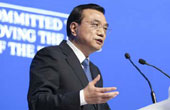Decade-long health initiative closes up shop
By Chris Davis (China Daily USA) Updated: 2015-02-04 09:41A 10-year partnership between China and the Global Fund to Fight AIDS, Tuberculosis and Malaria just wrapped up its operations and the results were better than anyone expected.
As commented on in the Lancet, "extraordinary progress was made towards the elimination of malaria", China's rate of HIV infection stabilized at 0.06 percent, and access to diagnosis and treatment of drug-resistant tuberculosis expanded from two projects in two provinces to 92 sites in 30 provinces.
 The $805 million project - co-financed by the Chinese government - not only measurably improved China's management of the three diseases, it created benefits that go "far beyond the metrics usually used to assess public health programs". Among those are deeper involvement with public organizations, bolstering public health systems and innovations in treatment.
The $805 million project - co-financed by the Chinese government - not only measurably improved China's management of the three diseases, it created benefits that go "far beyond the metrics usually used to assess public health programs". Among those are deeper involvement with public organizations, bolstering public health systems and innovations in treatment.
Another benefit noted by officials of the World Health Organization (WHO) has been "a change in mindset". Chinese leaders' perspective on development has progressed and as a result, the public health system has become more transparent, open and accountable.
China's participation in funding the project also made China a full active partner rather than simply an aid recipient, making all costs and procedures clearly and publicly allocated and audited and training officials to keep the processes going after the Global Fund leaves.
Each of the three diseases presented its own unique set of challenges to the project, WHO said.
Although malaria has been largely controlled in China, the southern and central parts of the country still face cases, especially Yunnan and Hainan provinces, which account for 70 percent of the cases in the country.
Most of the malaria cases occurred in the 26 counties bordering Laos, Myanmar and Vietnam - countries that are all endemic for malaria - and as the borders opened up more, the disease, which is easily spread by infected patients, found its way across borders too. The project set up rapid diagnosis and treatment centers, promoted the use of impregnated bed nets and strengthened health education.
For tuberculosis, the challenge was the unacceptably heavy burden the disease was imposing on the country, with an estimated 367 cases per 100,000 people, or 4.5 million, with each patient requiring direct diagnosis and treatment.
Despite great progress in treating tuberculosis in China, the country still counts 1 million new cases a year, among them 54,000 cases of Multiple Drug Resistant TB, whose treatment costs about $8,025 a year.
With HIV/AIDS, the challenge was, as it is everywhere, to try and manage social and other intimate behaviors. The project collaborated with grassroots organizations and local governments to reach hard to reach populations such as intravenous drug users, men who have sex with men and commercial sex workers who do not go to hospitals.
"Although outreach to at-risk populations is a challenge everywhere in the world," WHO said, "China's public health system in particular must make a special effort to connect with these groups."
"As China celebrates these achievements, it must also devise a roadmap for continuing its record of success, now that the Fund has left," WHO officials wrote.
Writing on the Council on Foreign Relations website, Yanzhong Huang, senior fellow for global health, and Jia Ping, chief executive directorof the Health Governance Initiative, called the Global Fund's legacy in China "a deeply mixed legacy".
"Although the Fund's money has made important contributions to China's fight against AIDS, TB and malaria, as well as its domestic governance in ideational, institutional, and policy domains, it is associated with uneven progress in grant performance, low value for money, unintended effects on civil society," they wrote.
They did acknowledge the good news from the decade-long project: By 2010, 32 percent of HIV/AIDS patients in need of antiretroviral therapy were receiving it, compared to 25 percent in 2005. In 2002, the TB case-detection rate was only 30 percent and by 2005 China had achieved an 80 percent detection rate, surpassing WHO's global target of 70 percent. And thanks to the Global Fund's support, 4.5 million particularly long-lasting insecticide-treated nets were distributed, helping China shift the priority of its anti-malaria efforts from malaria control to malaria elimination.
"Thanks to the Fund projects, Chinese health officials and civil-society organizations have not only been equipped with badly needed supplies and facilities but have also improved their skills in fundraising, management, budgeting and personnel training, all of which are crucial for capacity building," they wrote.
In other words, through the project, Chinese health officials said "they learned how to ask for money".
Contact the writer at chrisdavis@chinadailyusa.com.






